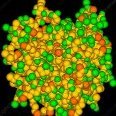Researchers get much closer to finding malaria drug by crystallising the virus’s protein in space
-
Recently Browsing 0 members
- No registered users viewing this page.
-
Topics
-
-
Popular Contributors
-
-
Latest posts...
-
13
How evil is Daniella Weiss?
Jeff, you can do better that that . That is quite a stupid response . Try a bit harder . -
28
Weather Typhoon Kajiki Prompts Thailand to Prepare for Impact
Monsoons are troughs you mean. Cyclones are weather systems that are cyclonic, can happen in any hemisphere in the world, a tornado is a cyclone. Typhoons originate in the west pacific. Hurricanes originate in the Atlantic. -
8,328
-
31
Travel Thai Airways Set to Soar: Major Expansion Plan Unveiled
When I have to pay premium I expect premium! Premium on Thai Smile was little more than tarted-up Coach with food served on a tray. Premium on Thai domestic is proper Premium. Bring your own sandwiches if you must. -
41
Best tasting English Pork sausages. Pattaya or Internet.
If you're in Bangkok, near Chinatown, I recommend this spice shop in the alley across the street from Wat Mangkon MRT: Nguan Soon https://www.nguansoon.com/ I stop in to refill my list every time I'm on my monthly Bangkok visa runs from China. I make cumberlands, generic breakfast sausage, and Italian. I quit bothering with the casings because I don't store them for long. -
31
Travel Thai Airways Set to Soar: Major Expansion Plan Unveiled
Unlikely, but if you want a very, very nice non-stop service, I can recommend Singapore Airlines non-stop SIN-MAN using A350's. MAN is the stopover on their SIN-IAH (Houston, TX) route and a couple of times when pax loads have been light, the fares have been around 500 quid for a one-way. They also use the A350 to service BKK and on both sectors, I had all 3 seats to myself. How you get to/from Singapore is up to you.
-
-
Popular in The Pub




.thumb.jpg.b54783ad387f65d779e04f535fcfeee9.jpg)









Recommended Posts
Create an account or sign in to comment
You need to be a member in order to leave a comment
Create an account
Sign up for a new account in our community. It's easy!
Register a new accountSign in
Already have an account? Sign in here.
Sign In Now